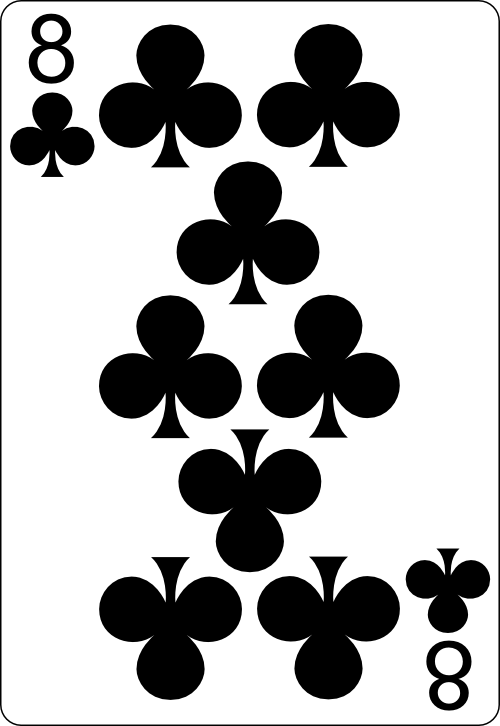The World of Postflop Poker
Entering the world of poker means understanding the various stages of the game and their associated strategies. One of the critical stages is known as the postflop, which holds its unique set of strategies and techniques.
Understanding Postflop Betting
Postflop betting refers to the betting that takes place after the first three community cards, known as the “flop,” are dealt. This stage forms a significant part of the game as it reveals half of the community cards, enabling players to gauge the strength of their hands and devise appropriate betting strategies.
During the postflop stage, players can choose to check, bet, fold, call, or raise, depending on their hand and the unfolding game dynamics. Each decision carries its own set of implications, affecting the course of the game and potentially the final outcome. Understanding these dynamics and mastering the art of postflop betting form the foundation of a successful poker strategy.
Importance of Postflop Betting Strategies
Postflop betting strategies hold immense importance in the game of poker. A well-devised strategy can help players take control of the game, manipulate the pot size, and extract maximum value from their opponents.
A good postflop strategy considers a multitude of factors such as the player’s hand strength, the opponent’s likely hands, the size of the pot, and the number of players in the hand. It helps players make informed decisions, manage risks, and optimize their chances of winning.
Moreover, mastering postflop betting strategies allows players to navigate complex situations, turn the tables in their favor, and significantly improve their overall game. Whether a player is aiming for a casual game or a high-stakes tournament, understanding and implementing postflop betting strategies is a crucial step towards poker success.
For those interested in delving deeper into the world of postflop poker, our resources on postflop poker strategy and postflop poker tips offer valuable insights and practical advice.
Basic Postflop Strategies
To excel in the world of poker, understanding and implementing effective postflop betting strategies is crucial. Here, we delve into three fundamental postflop strategies: value betting, bluffing, and slow playing.
Value Betting
Value betting is one of the most important postflop betting strategies. It involves betting with the belief that you hold the best hand at the table. The aim is to get your opponents to call with a worse hand, thereby extracting maximum value from the pot.
Consider the size of the bet carefully. The goal is to set a price that, while high enough to increase the pot, is still low enough to encourage a call from players with weaker hands. It’s a delicate balance that requires practice and a solid understanding of your opponents’ tendencies.
Bluffing
Bluffing is a classic poker strategy, used when a player with a weak hand bets as if they have a strong hand, hoping to force other players to fold. Successful bluffing can turn a potentially losing hand into a winning one.
The success of a bluff largely depends on the ability to read opponents and the game scenario. A well-timed bluff can be a powerful weapon in your poker arsenal, but bluffing too often or predictably can lead to disaster.
Slow Playing
Slow playing is a strategy used when a player with a strong hand plays passively, giving the illusion of weakness. This tactic is used to encourage opponents to bet more, under the false assumption that they have the stronger hand.
While slow playing can reap big rewards, it’s a risky strategy. It requires a strong understanding of the game and your opponents. Overuse or misuse of slow playing can backfire, leading to missed betting opportunities or allowing opponents to catch up.
These basic postflop strategies form the foundation for more advanced tactics like semi-bluffing and pot control. Implementing these strategies effectively can significantly improve your postflop game. For a deeper dive into postflop strategy, consider reviewing our detailed guide on postflop poker strategy.
Advanced Postflop Strategies
As poker enthusiasts delve deeper into the game, they begin to understand that advanced postflop strategies can be game-changing. These tactics, such as pot control, semi-bluffing, and check-raising, can add depth to one’s game and help navigate complex postflop scenarios.
Pot Control
Pot control is a crucial aspect of postflop play. It involves managing the size of the pot based on the strength of your hand and the likely hands of your opponents. The main goal is to keep the pot small when you’re unsure of your position and to increase it when you’re confident you have the best hand.
Implementing pot control requires a deep understanding of hand values, opponent tendencies, and risk management. It’s a delicate balance between being aggressive to maximize value and being cautious to minimize losses. To delve deeper into this strategy, refer to our article on postflop poker strategy.
Semi-Bluffing
Semi-bluffing is an advanced strategy that involves betting or raising with a hand that isn’t the best at the moment but has the potential to improve with future cards. The power of semi-bluffing lies in its dual win potential. You can win the pot immediately if your opponent folds, or you can win later if your hand improves.
This strategy can be particularly effective in aggressive games where players are more likely to fold to a raise. However, it’s important to be aware of your opponents’ tendencies and adapt your semi-bluffing strategy accordingly. For further insights into semi-bluffing, check out our postflop semi-bluffing article.
Check-Raising
Check-raising is a powerful move that can be used as both a value bet and a bluff. It involves checking your hand to your opponent and then raising when they bet. This move can help to build the pot when you have a strong hand or to bluff your opponent into folding when you have a weak hand.
The effectiveness of a check-raise largely depends on your ability to accurately read your opponent. This strategy requires a good understanding of your opponent’s tendencies and betting patterns. For a comprehensive guide on when to use this strategy, our postflop hand analysis provides a deeper understanding.
The application of these postflop betting strategies can significantly enhance a player’s game and decision-making process. Remember that the most effective strategies are often flexible, taking into account the dynamic nature of the game and adapting to the situation at hand. Continual learning, practice, and adaptation are key in mastering these advanced postflop strategies.
Decision-Making Postflop
Mastering the postflop stage of a poker hand requires strategic decision-making. This involves reading the board, evaluating hand strength, and assessing opponent behavior. Each of these factors plays a crucial role in determining the most effective postflop betting strategies.
Reading the Board
Understanding the composition of the board is a vital aspect in postflop poker. This involves recognizing potential hand rankings that the community cards could form, such as straights, flushes, or full houses. Players should also consider the possible hands that their opponents could have, based on their pre-flop actions.
For example, a board showing these cards has a lot of potential:
 10♣️ |  J♣️ |  Q♣️ |
Players holding a 9 and a K, for instance, would have a straight. Those with two clubs would be drawing to a flush. Recognizing these possibilities can guide a player’s betting strategy postflop.
Evaluating Hand Strength
Once the board has been read, the next step is evaluating the strength of your own hand. This involves comparing your hole cards with the community cards on the board to determine the best possible hand you can form.
The strength of your hand should be evaluated in relation to the potential hands that could be formed from the board. For instance, if the board is showing:
  5♠️ |   8♣️ |   J♠️ |
…and you hold:
  J♠️ |    Q♣️ |
…you have a pair of Jacks. While this is a strong hand in many situations, if your opponent has been betting aggressively, they might have a higher pair or a straight.
This evaluation process is crucial in guiding your betting decisions. For a deeper understanding of this process, our postflop hand analysis provides valuable insights.
Assessing Opponent Behavior
The final factor to consider when making postflop decisions is the behavior of your opponents. Paying attention to how they bet can provide valuable clues about their potential hand strength.
For example, if an opponent raises pre-flop and then bets aggressively postflop, they likely have a strong hand. Conversely, if they check or call, they might have a weaker hand or be drawing to a potential hand.
Assessing opponent behavior can also help you to determine when to bluff, when to call, and when to fold. For more on this, check out our postflop poker strategy article.
By carefully reading the board, evaluating your hand strength, and assessing your opponents’ behavior, you can make better informed decisions postflop. These factors are integral to the development of effective postflop betting strategies, and mastering them can greatly enhance your poker performance.
Implementing Postflop Betting Strategies
Once one grasps the basic and advanced postflop betting strategies, the next step involves learning how to effectively implement these strategies. This includes understanding when to bet, how much to bet, and how to adjust your strategy based on your opponents’ reactions.
When to Bet
Determining when to bet postflop largely depends on the strength of your hand and the potential actions of your opponents. Generally, you should consider betting when:
- You have a strong hand and want to extract value.
- You have a weak hand but believe you can make your opponents fold through a bluff.
- You have a drawing hand and want to utilize a semi-bluff strategy.
Remember, betting should be a deliberate action with a clear purpose. Understanding why and when to bet can significantly improve your postflop poker strategy.
How Much to Bet
The size of your bet can influence the behavior of your opponents and the potential profit of the hand. Here are some considerations:
- Value Betting: If you have a strong hand and you’re value betting, you want to encourage calls from weaker hands. Thus, your bet size should be tantalizing—not too large to scare off opponents, but not so small that you’re not maximizing your potential profit.
- Bluffing: If you’re bluffing, your bet size needs to be convincing enough to induce a fold, without risking too much in case your bluff is called.
- Drawing Hands: If you’re semi-bluffing with a drawing hand, your bet size should balance the potential payoff of hitting your draw with the risk of losing the bet if your draw doesn’t come in.
Adjusting Strategy Based on Opponent Reactions
A critical aspect of implementing postflop betting strategies is the ability to adjust your strategy based on the reactions and tendencies of your opponents. Paying attention to how they respond to different bet sizes or betting patterns can provide valuable clues about their hand strength and betting tendencies.
For example, if an opponent consistently folds to large bets but calls smaller ones, you can adjust your bet sizing to exploit this tendency. Similarly, if an opponent often calls postflop bets only to fold to aggression on later streets, you may choose to employ a more aggressive strategy postflop.
Remember, poker is a dynamic game, and the best players are those who can adapt their strategies based on the situation at hand. For more insights on adjusting your strategy and analyzing hands postflop, check out our article on postflop hand analysis.
In conclusion, implementing effective postflop betting strategies involves a combination of understanding when and how much to bet, as well as being able to adapt your strategy based on your opponents’ reactions. By mastering these aspects, you can enhance your postflop play and increase your chances of poker success.

